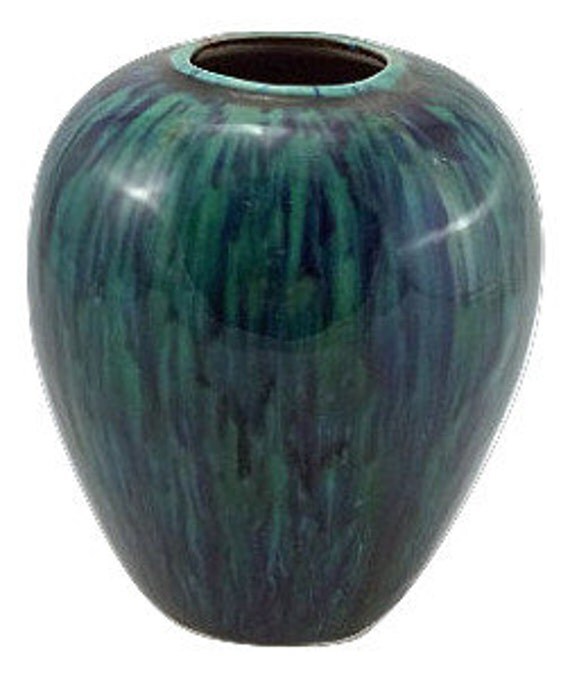

No cracks or stains There is some crazing and it does have a shallow chip on the rim. Don’t brush glaze from the big glaze bucket. Williamsburg Handmade Pottery Multi Color Drip Glaze 4 Finger Fan Vase 6 1/2 tall x 7 across the fan x 3 1/2 diameter base. Use a small compact brush to wipe away glaze in areas you can’t reach with a sponge. Let the drip dry, then carefully scrape it off with a dental tool or metal rib. Resist the urge to wipe the drip with a sponge. Important Note – if you allow water to sit in the tray after watering your plant, it can soften the paint around the bottom of the pot and cause it to peel. If a drip flows onto a previously glazed surface, stop, set the pot down and wait.the unglazed area and determine the color of the Clay used in making it. Dryden was originally located in Ellsworth, Kansas, but relocated to Hot Springs, Arkansas in the 1950s. Beige or Tan Clay Early Frankoma used tan or beige clay, and so did Dryden pottery. I use a small brush designed to work with oil paint to apply luster. Jomon Pottery Production in Central Japan JUNKO HABU AND MARK E. Usually unmarked, with a drip glaze, this pottery often has combinations of brown and orange or blue and green glaze on a red clay base. You can use your decorated pot to hold office supplies, bookmarks, crayons, scrunchies, bracelets, or anything else you can think of! As a ceramic artist who adds gold luster to every piece I fire, the most common.We used a jar to hold our pot, which allowed the paint to drip off onto the protected work surface. If you place the pot right on the work surface, the paint will gather around the rim and dry there, causing a messy looking jagged rim. Scheurich West German Blue Drip Glaze Pottery Vase French Anduze Style Pottery Garden Pot with Yellow, Green and Brown Drip Glaze Modern Pottery Fat Lava Table Lamp Ceramic Drip Glaze Denmark 1960s German Raku Pottery Vase with Turquoise Drip Glaze by Strehla, c. Be certain you use something to elevate the pot so that the rim is not touching the work surface.

Use small amounts because you can always add more, but can’t take any away. The trick here is to not squeeze too much paint out at once so you don’t end up with a big blob of muddled shades.We recommend using a combination of acrylic paints and a sealer, or if you want to keep your pots outside, go with Patio Paint, which is specifically formulated for the outdoors.


 0 kommentar(er)
0 kommentar(er)
